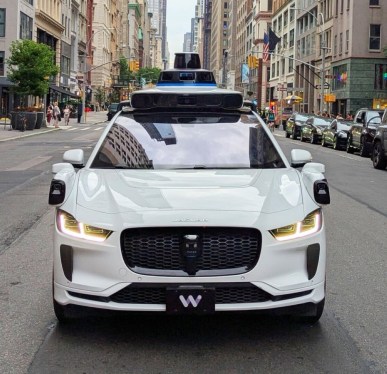New York City regulators have extended Waymo’s autonomous vehicle testing permit through the end of the year. The permit was initially granted in August to allow Waymo to test its robotaxis in the city until the end of September. The terms of the extended permit remain the same. Waymo can deploy up to eight of its Jaguar I-Pace vehicles in Manhattan and Downtown Brooklyn with a human safety operator behind the wheel. A spokesperson for Waymo said the permit makes the company’s drivers exempt from New York’s rules that mandate they keep one hand on the wheel at all times.
Waymo’s permit extension signals that it is inching towards being the first autonomous vehicle company to launch a robotaxi service on the chaotic and dense streets of New York City. The company currently operates a commercial service in San Francisco, Austin, Atlanta, Phoenix, and Los Angeles. It plans to open to the public in Miami, Washington, D.C., Dallas, Denver, and Nashville within the next year.
Assemblymember Brian Cunningham, a sponsor of legislation on autonomous vehicles at the state level, expressed encouragement. He stated that he is encouraged to see New York City moving forward with testing that will show how this technology can improve safety, reduce congestion, and expand mobility. He described this as the type of measured innovation that allows the city to prepare for the future while making sure progress works for New Yorkers.
Still, Waymo has a long way to go in New York City, a place where the Alphabet-owned company has been trying to operate since 2021. Even with this permit, Waymo cannot carry passengers or operate a commercial robotaxi service without getting separate licenses from the city’s Taxi and Limousine Commission. A Waymo spokesperson declined to comment on whether the company is in talks to apply for those licenses.
Another significant hurdle is that no permitting structure exists in New York that allows Waymo or any other autonomous vehicle company to test or deploy robotaxis without a human safety driver. While legislation has been introduced to create a framework for driverless operation, nothing has been passed into law yet.

